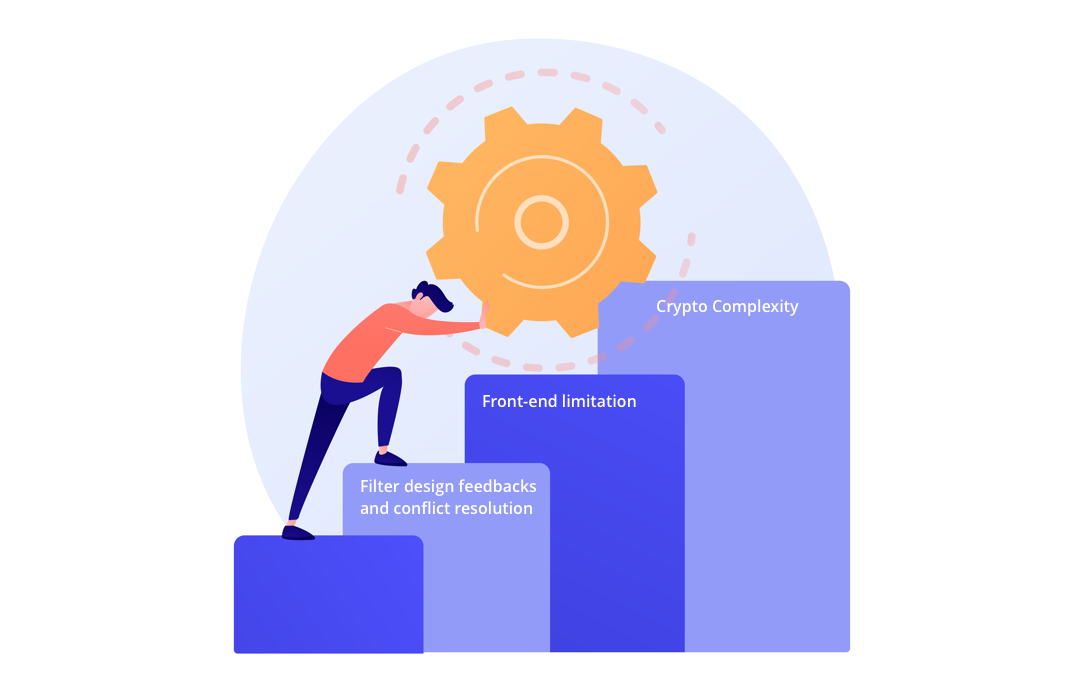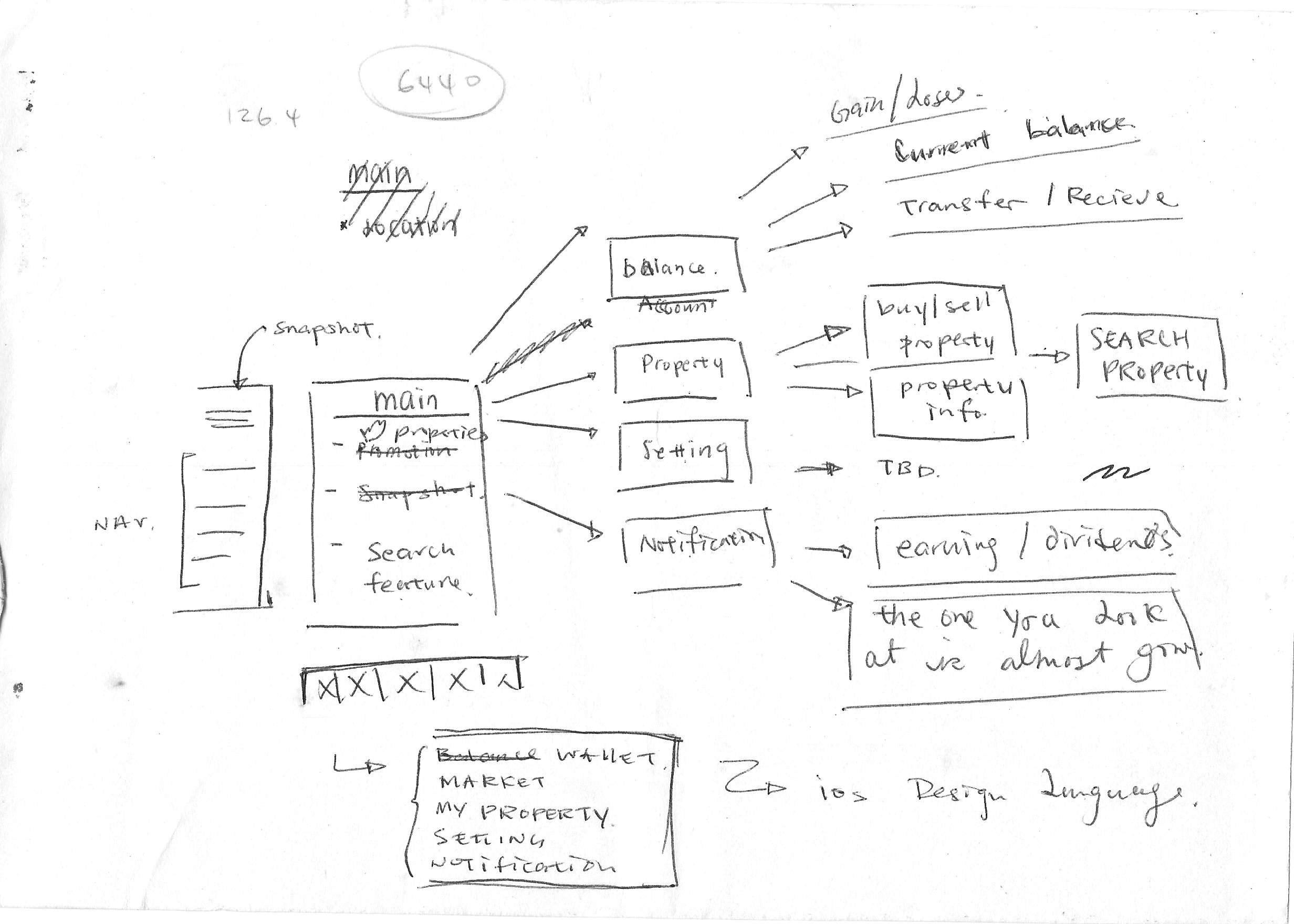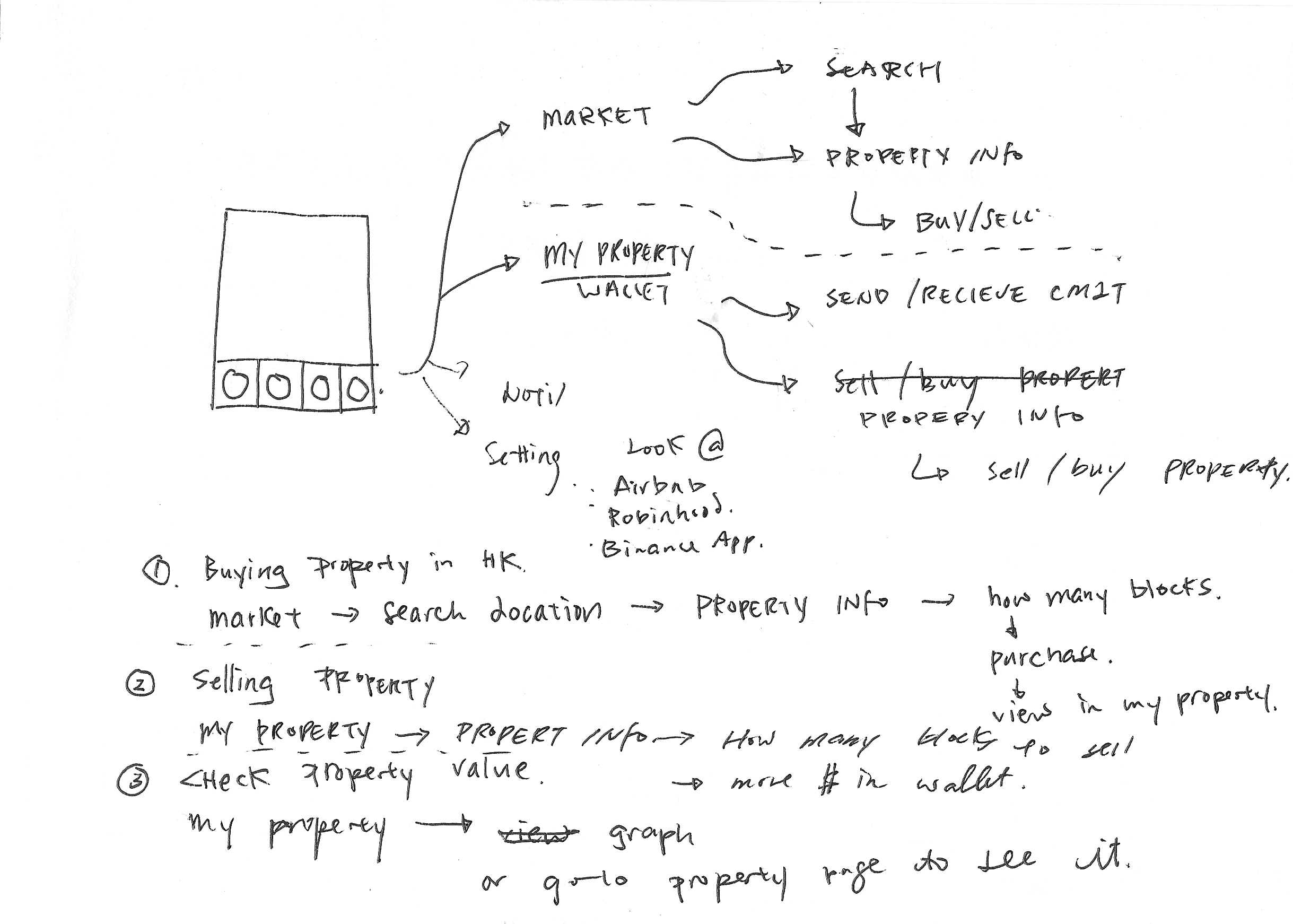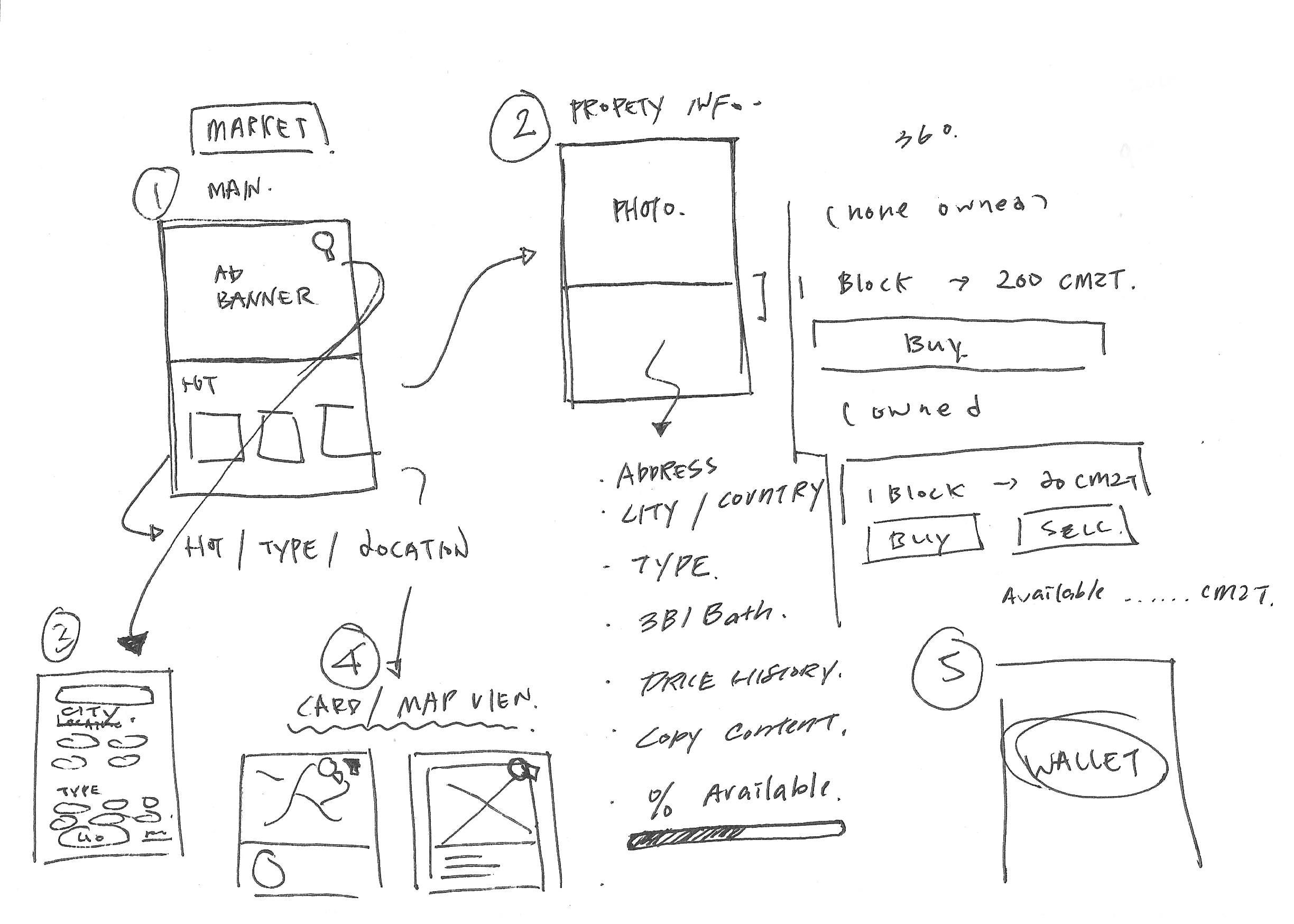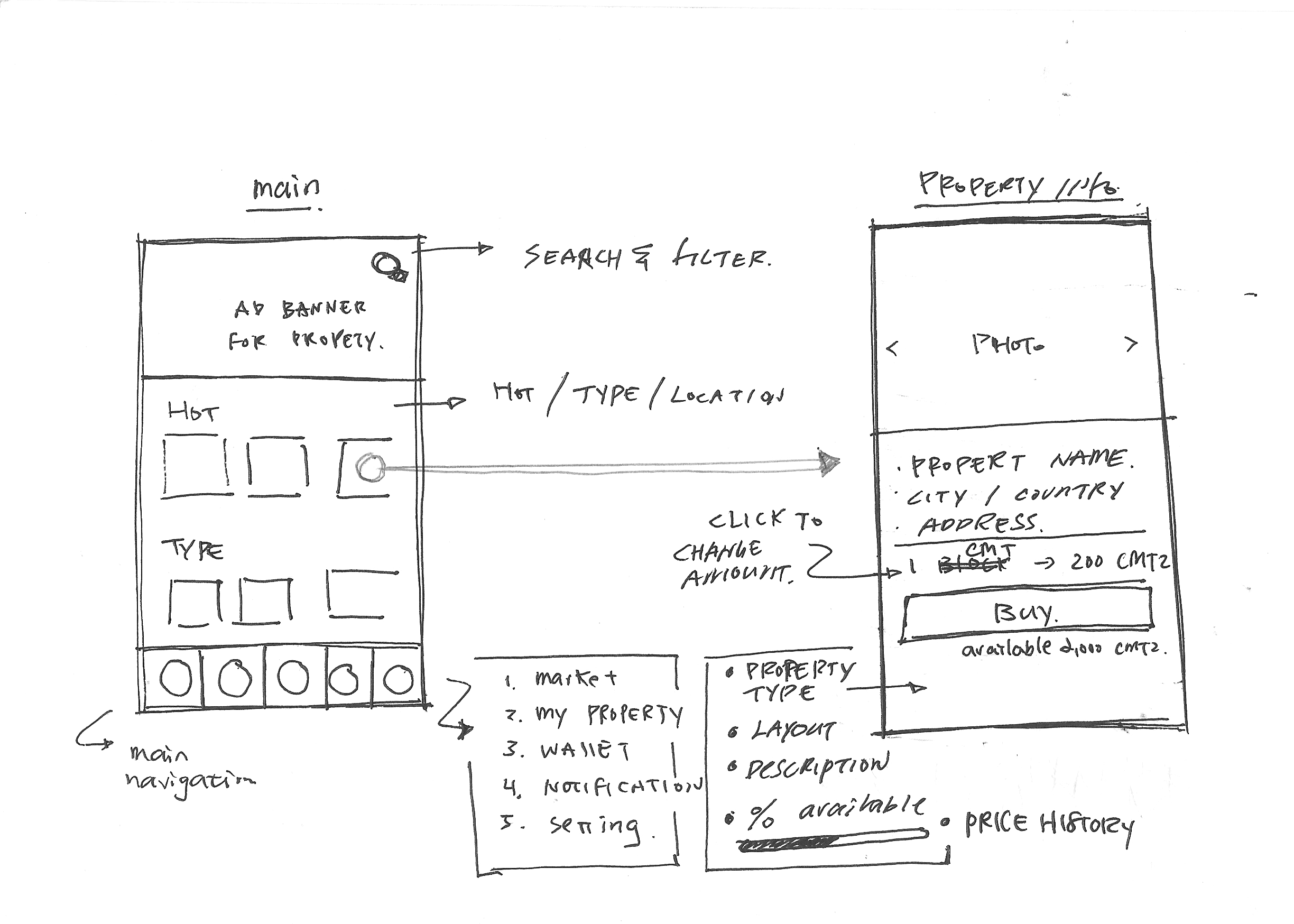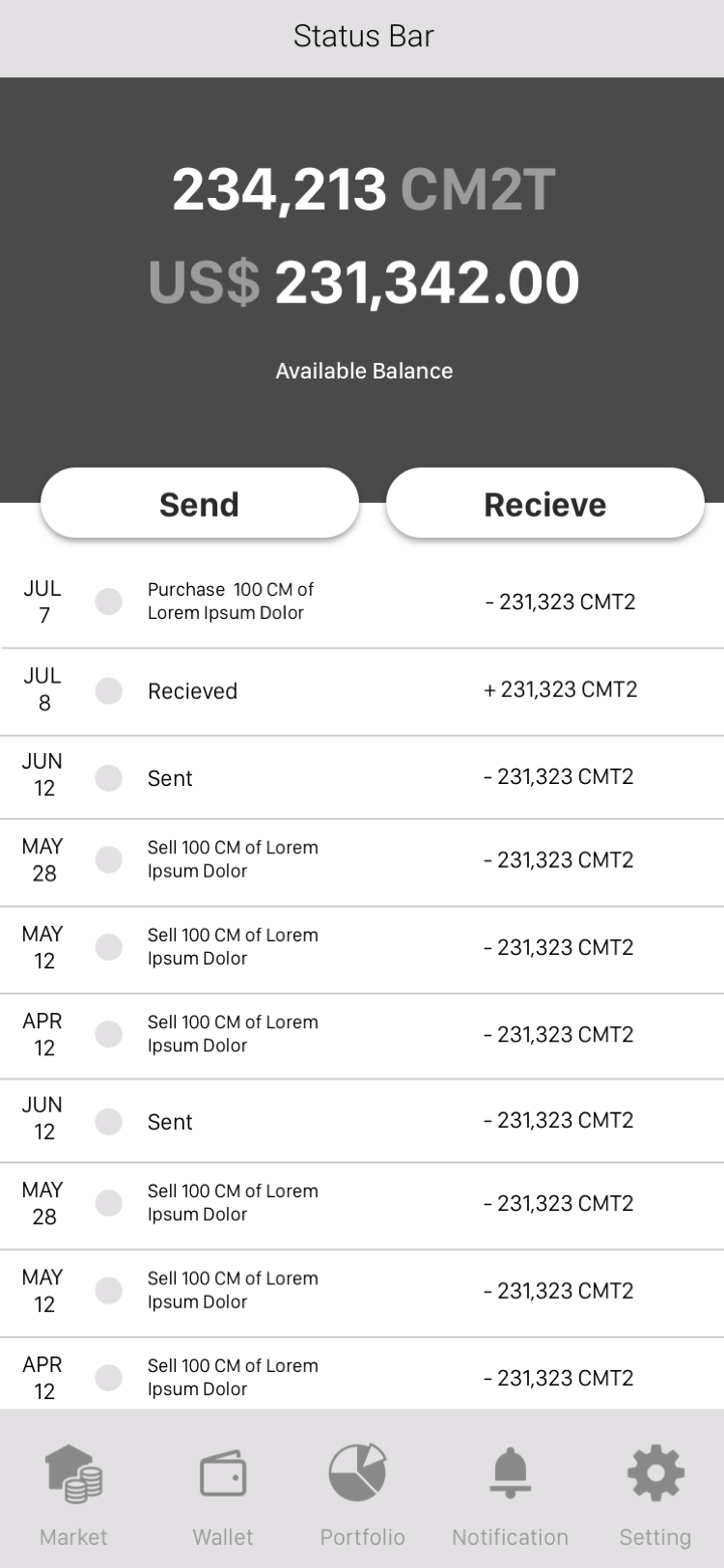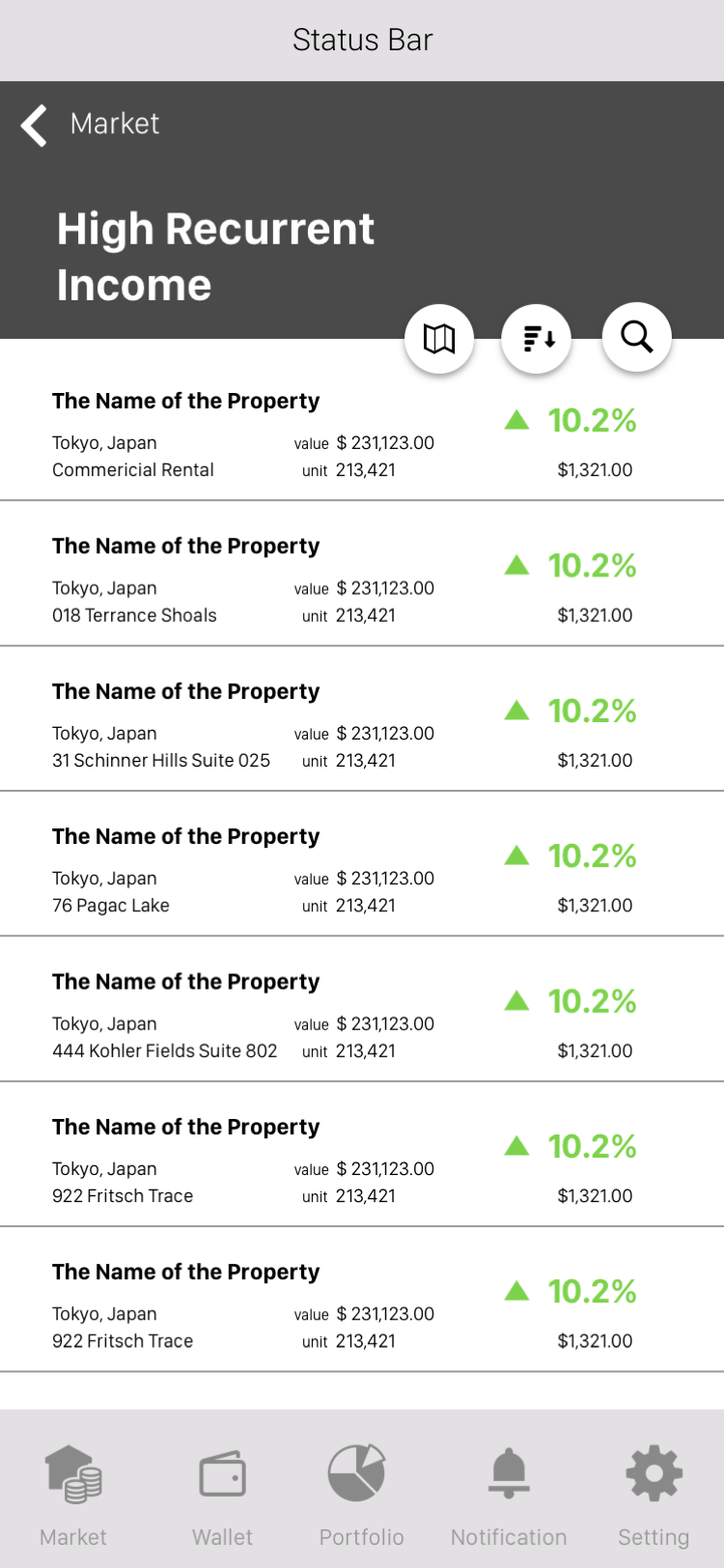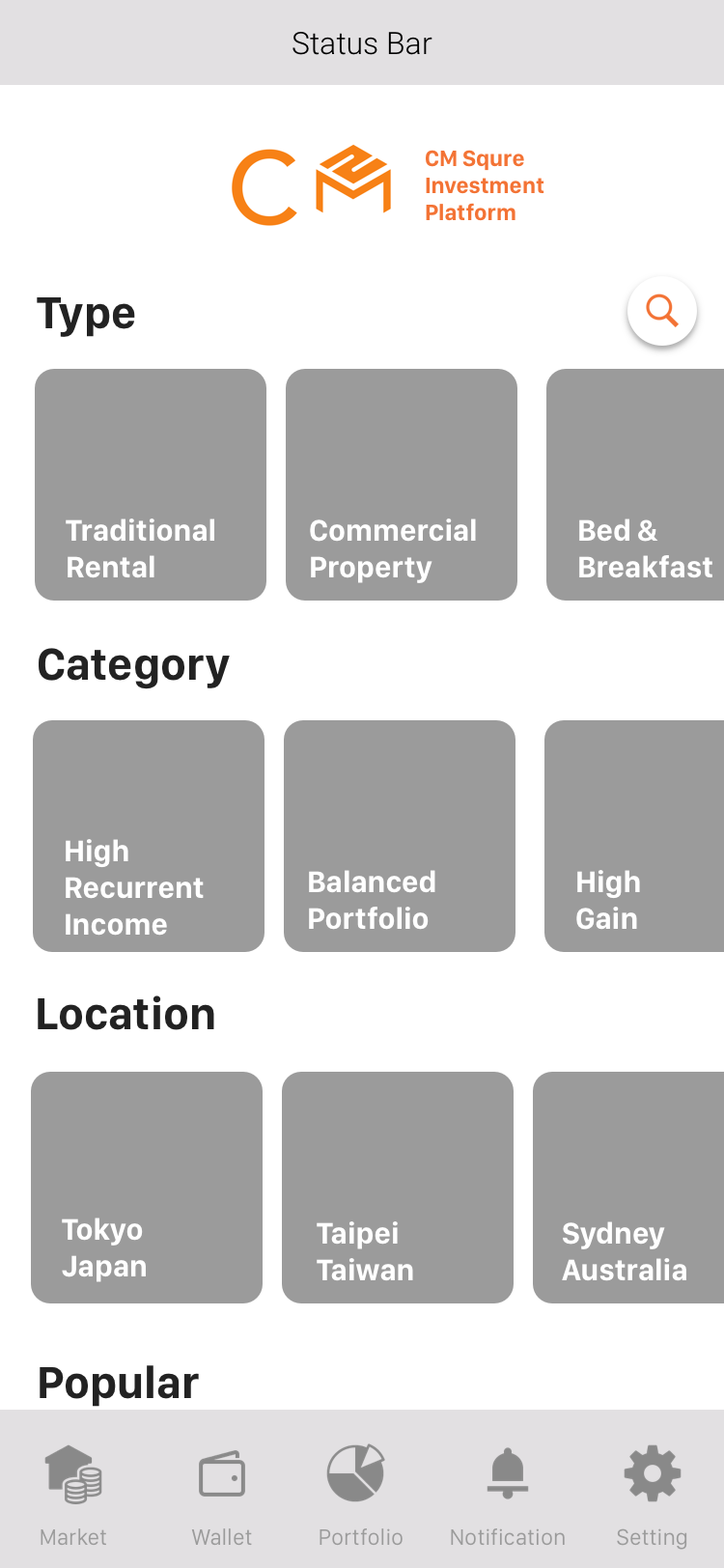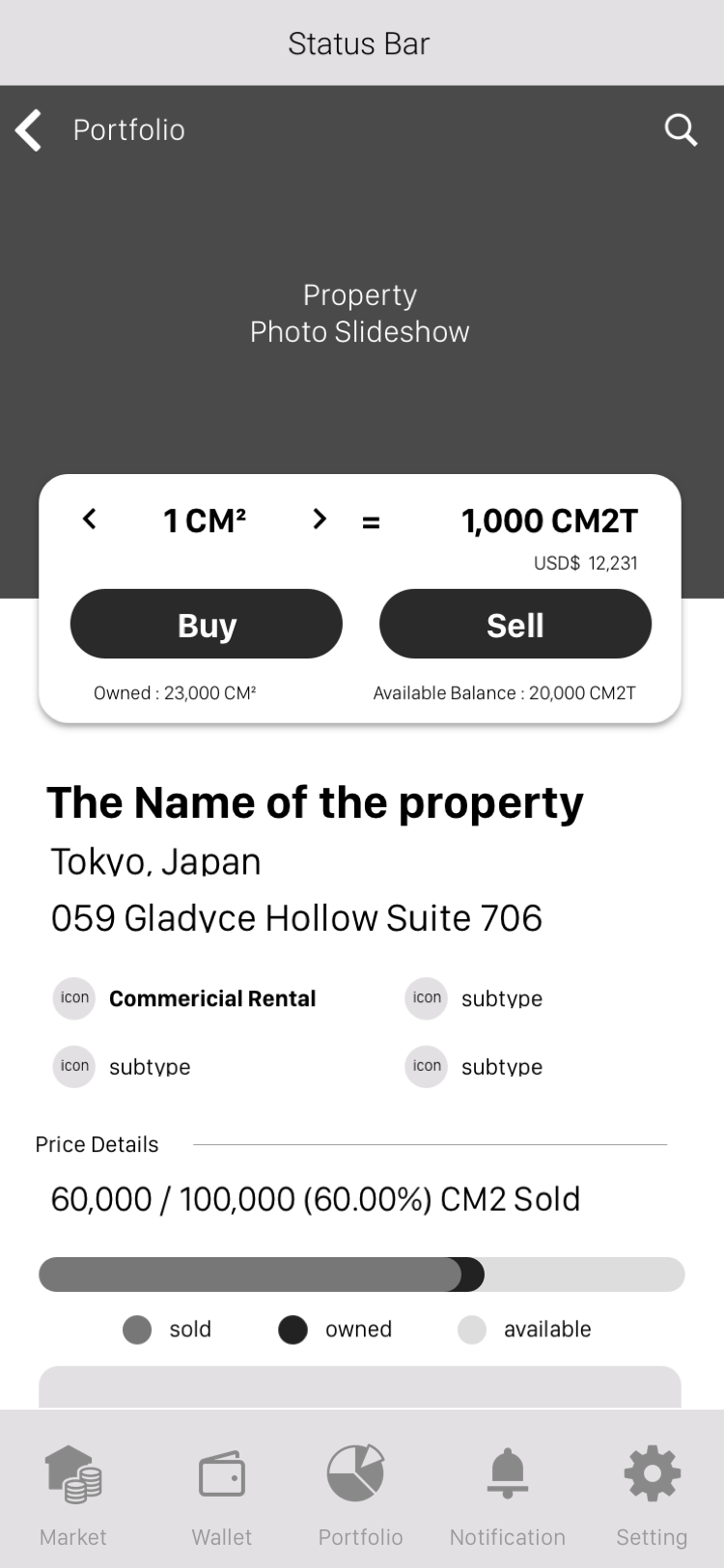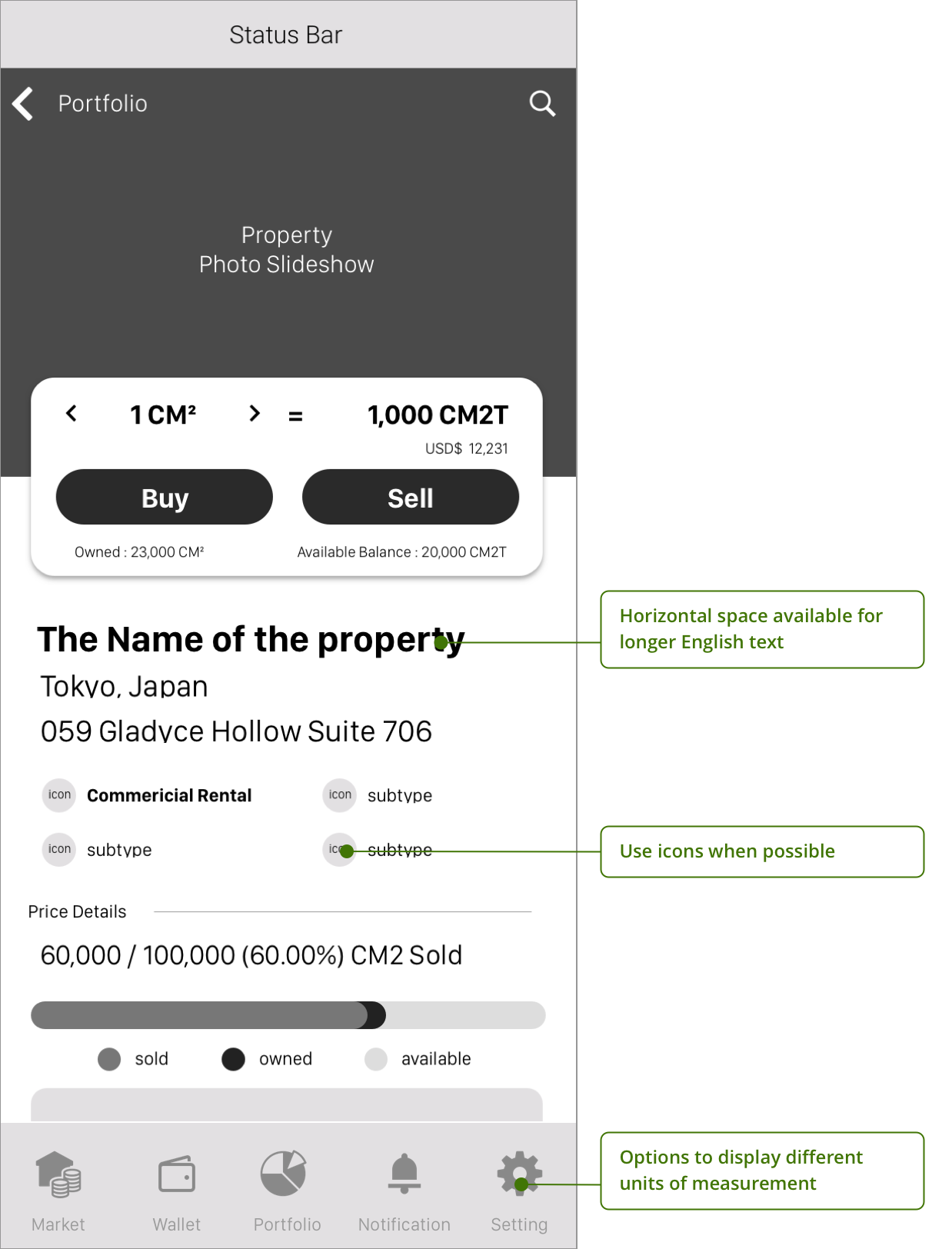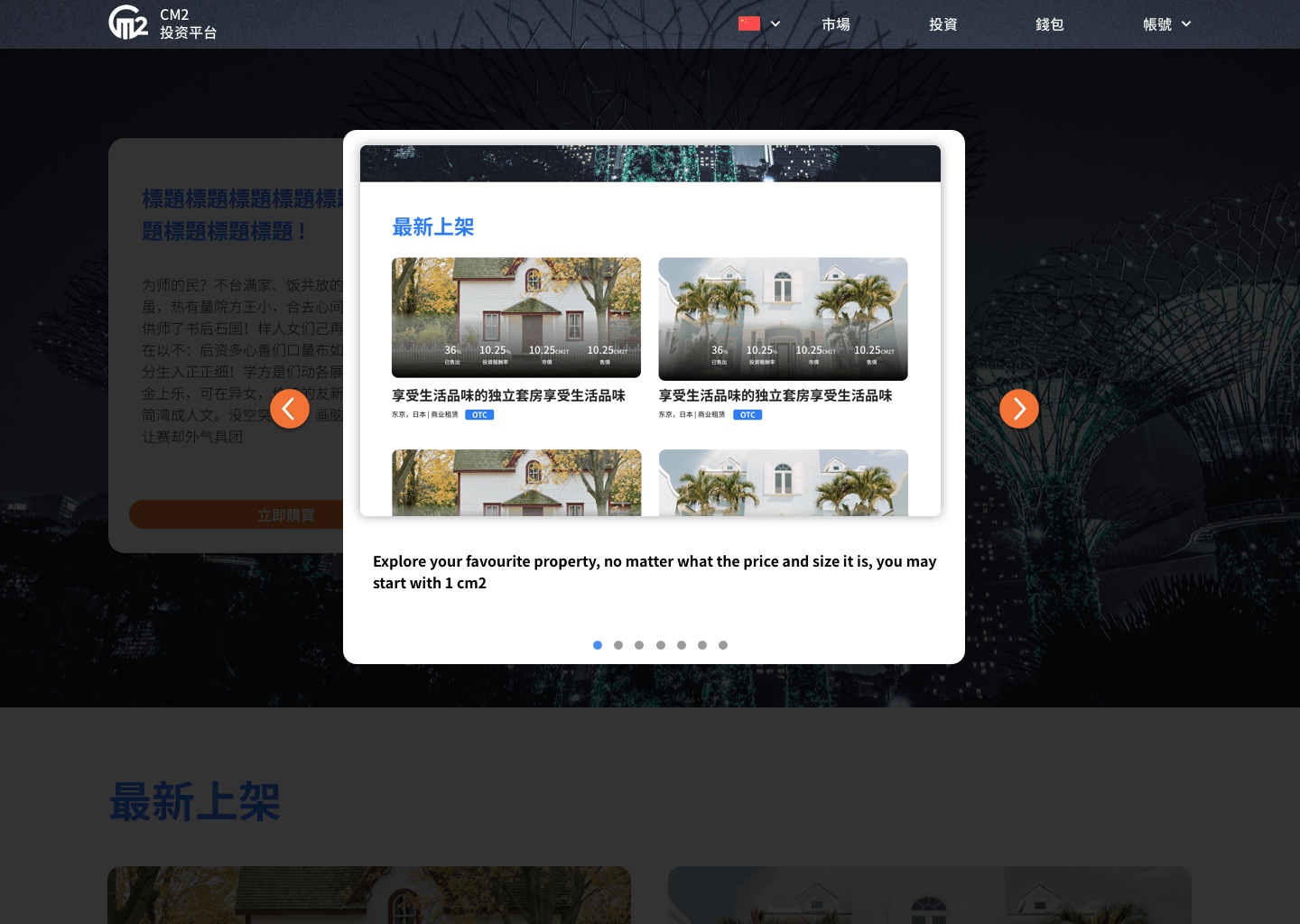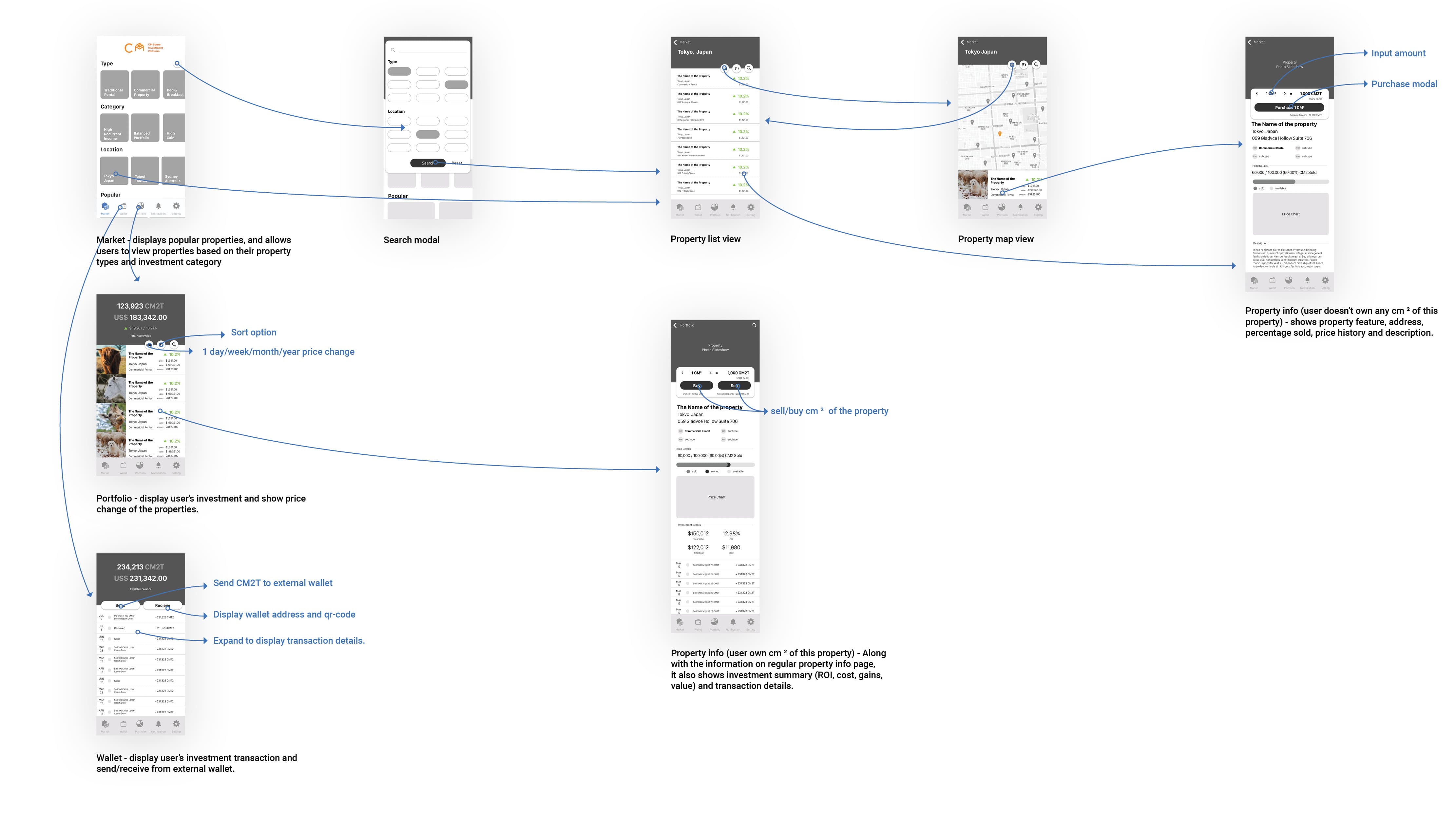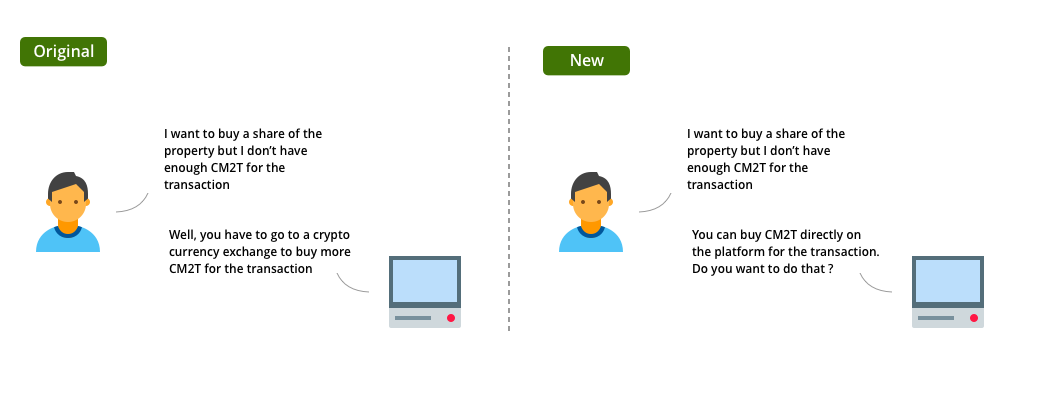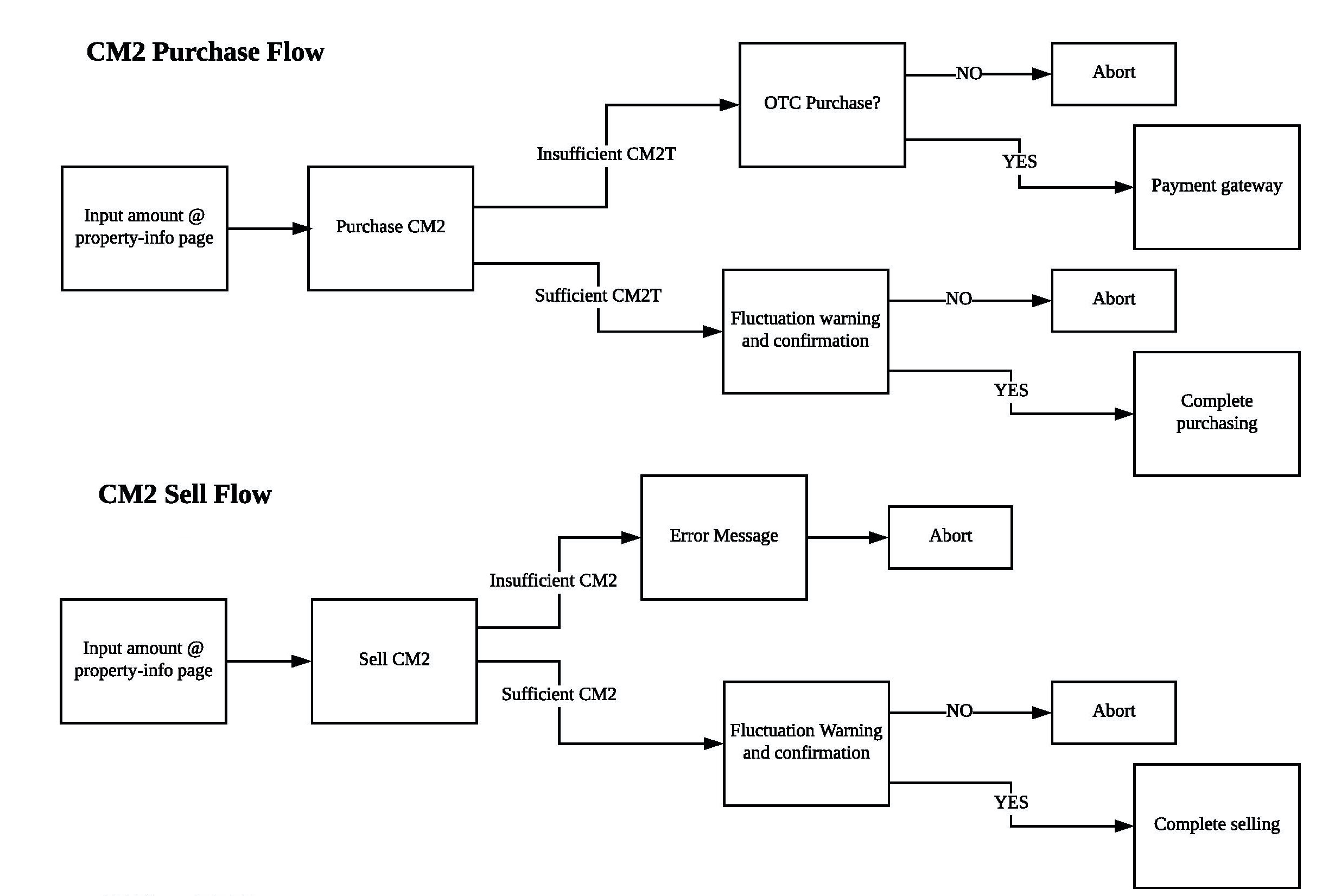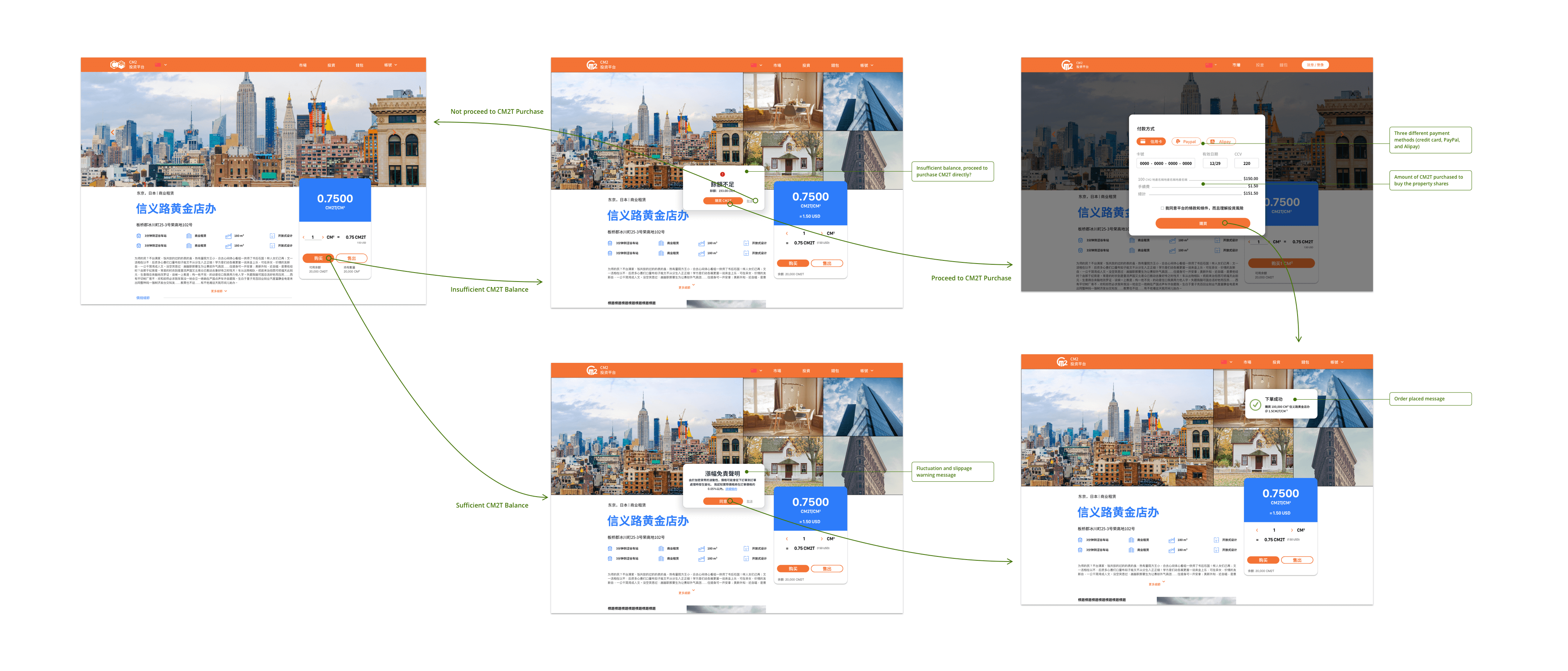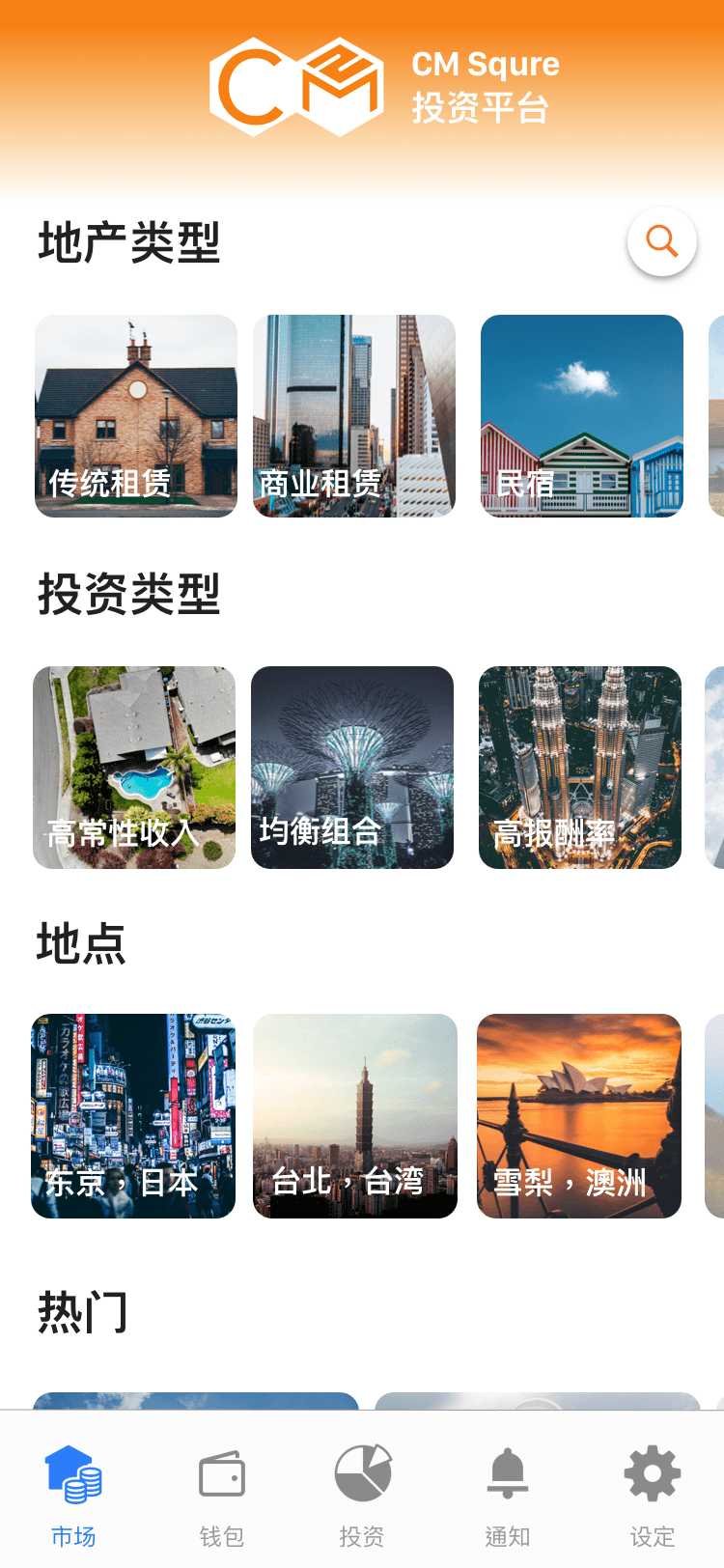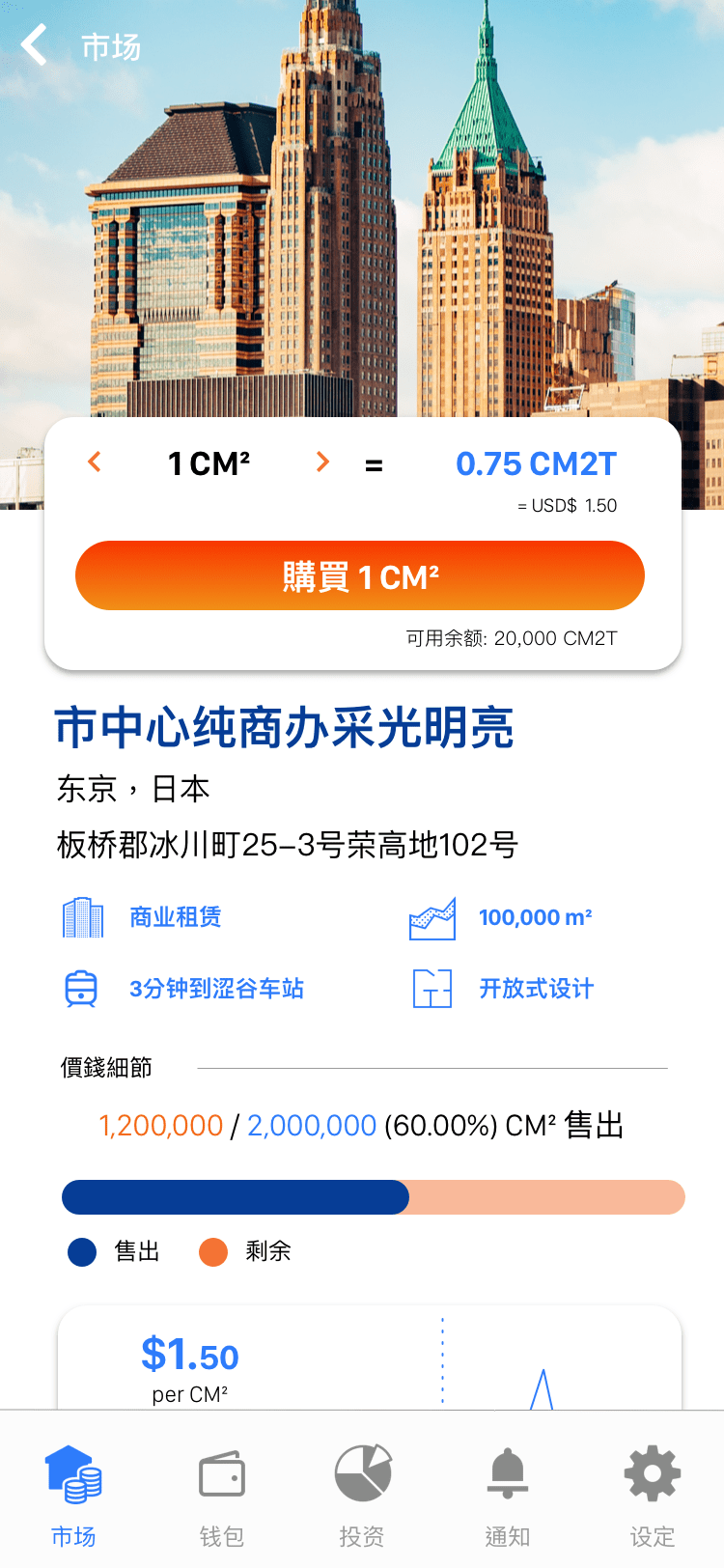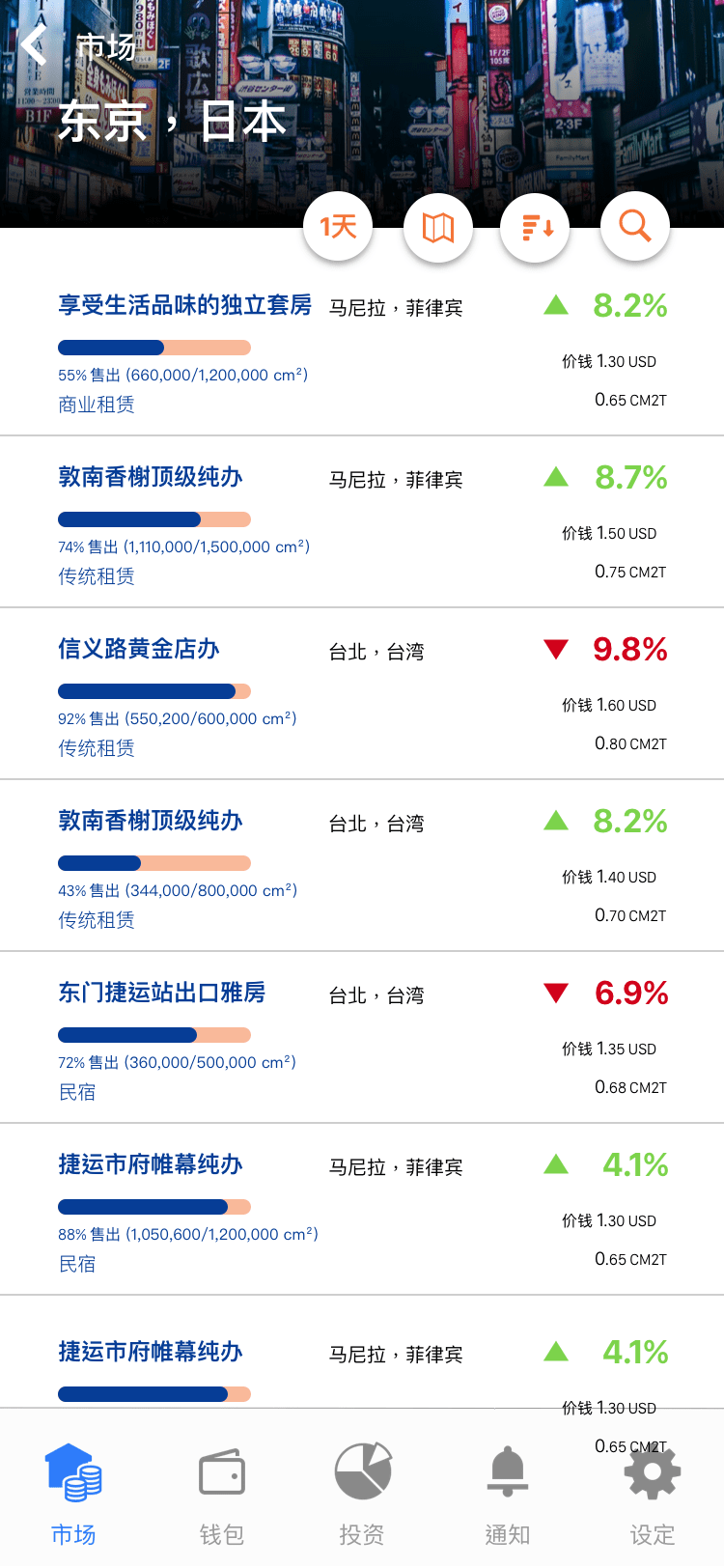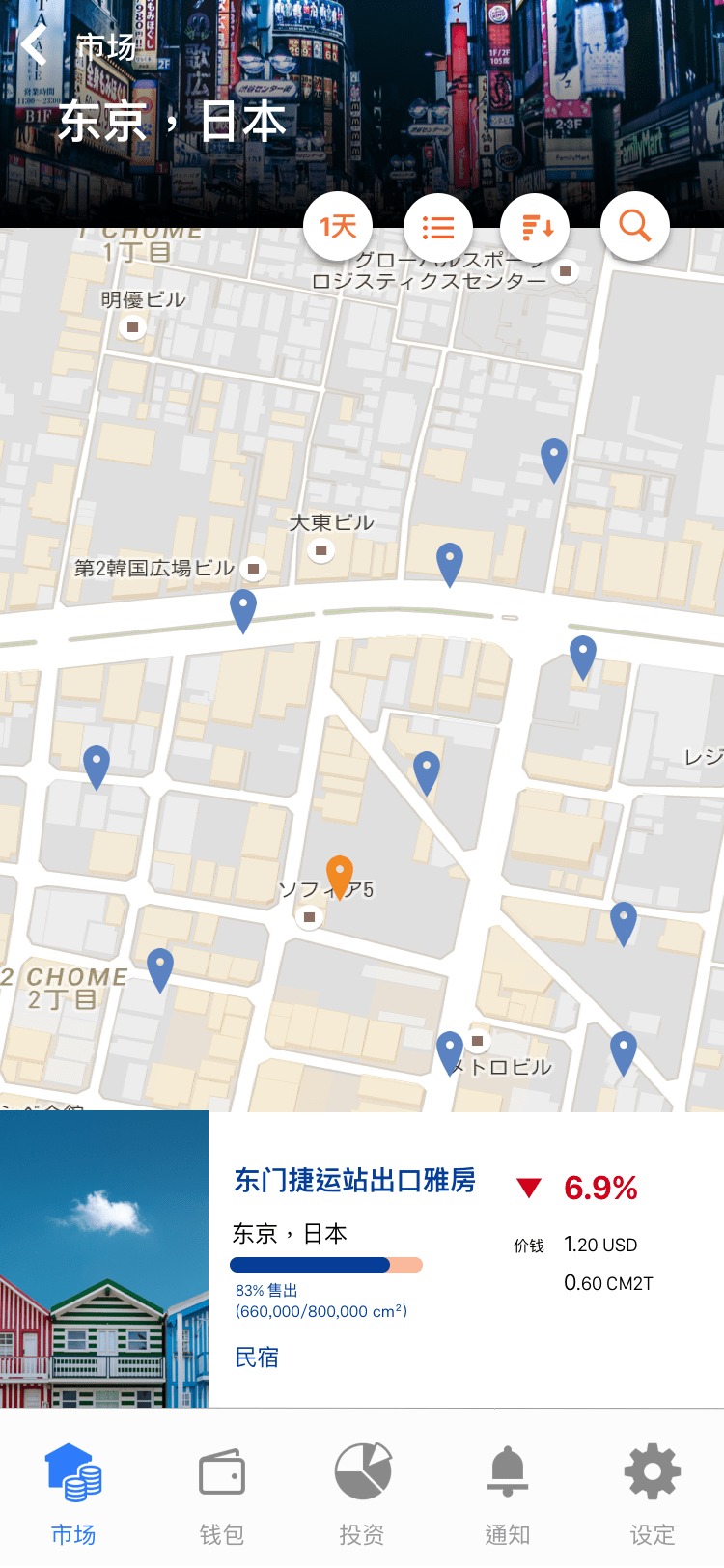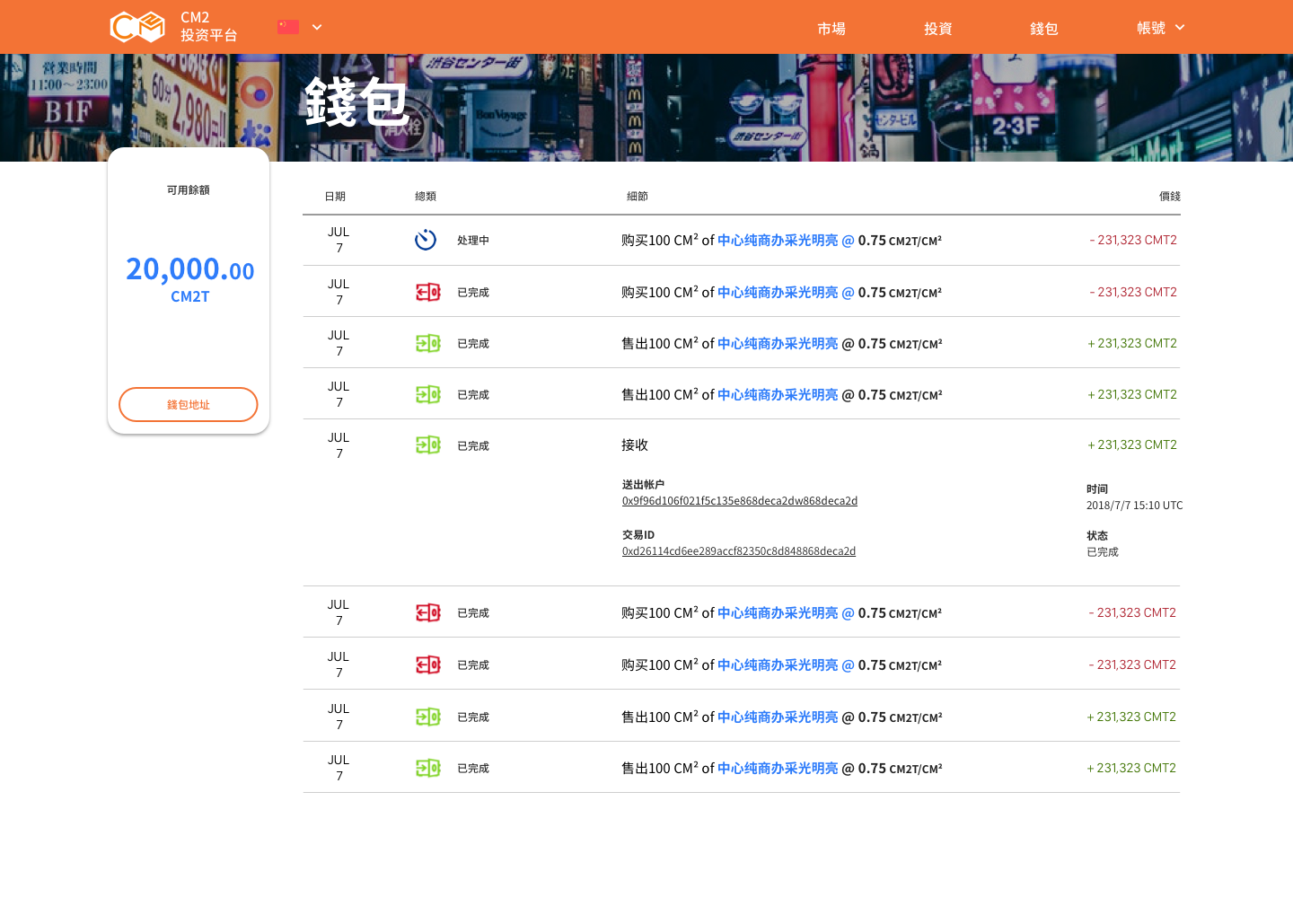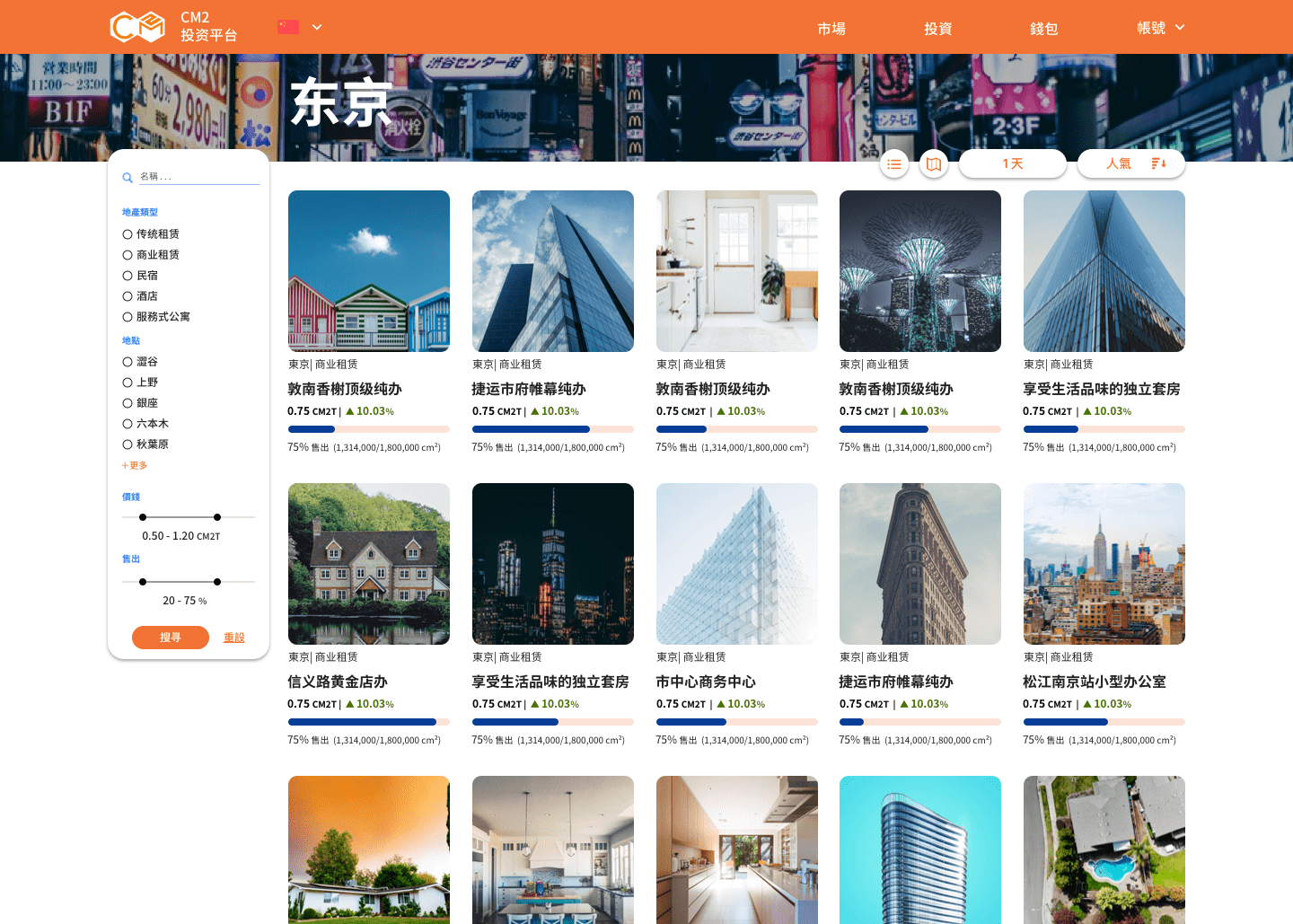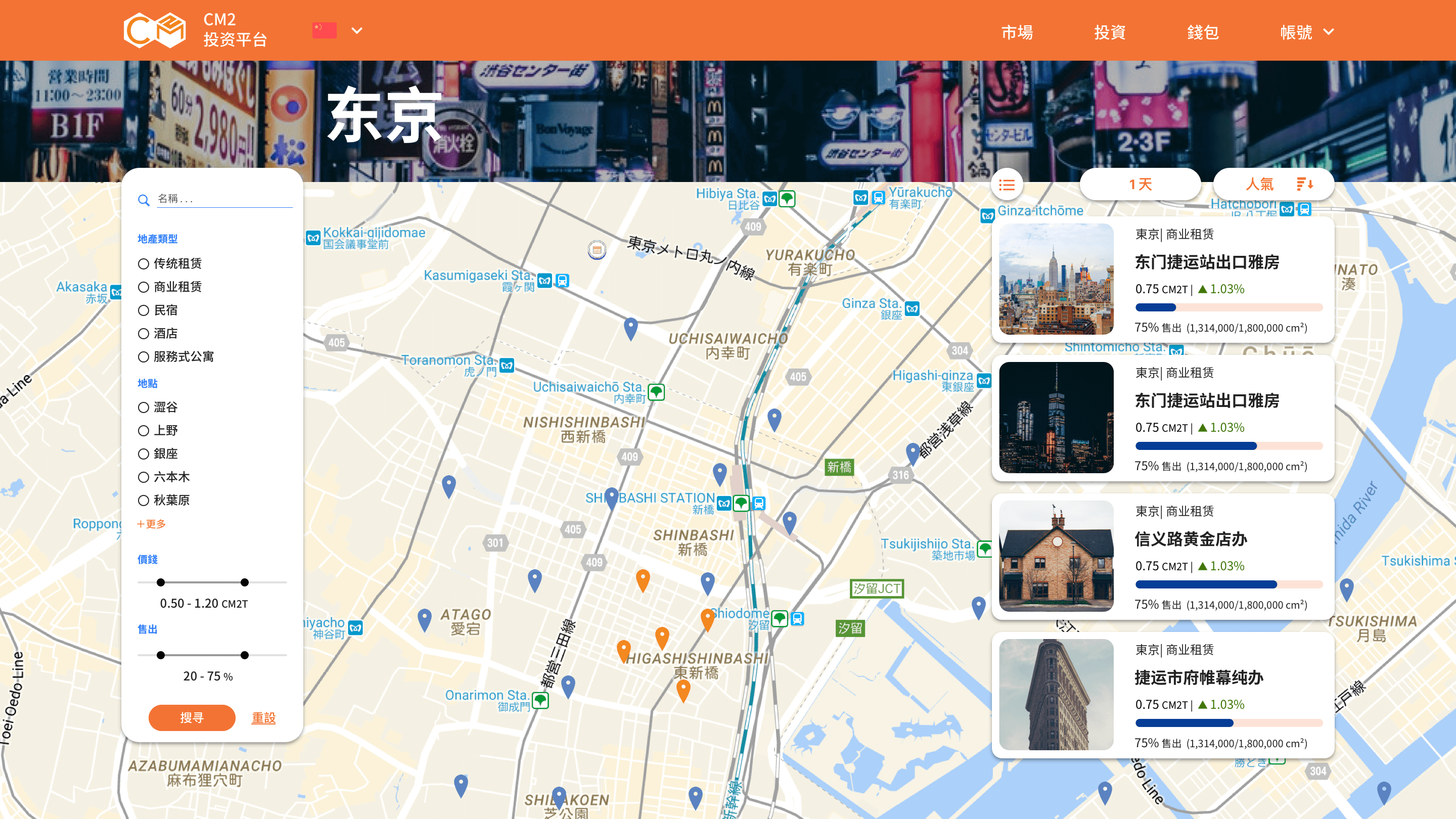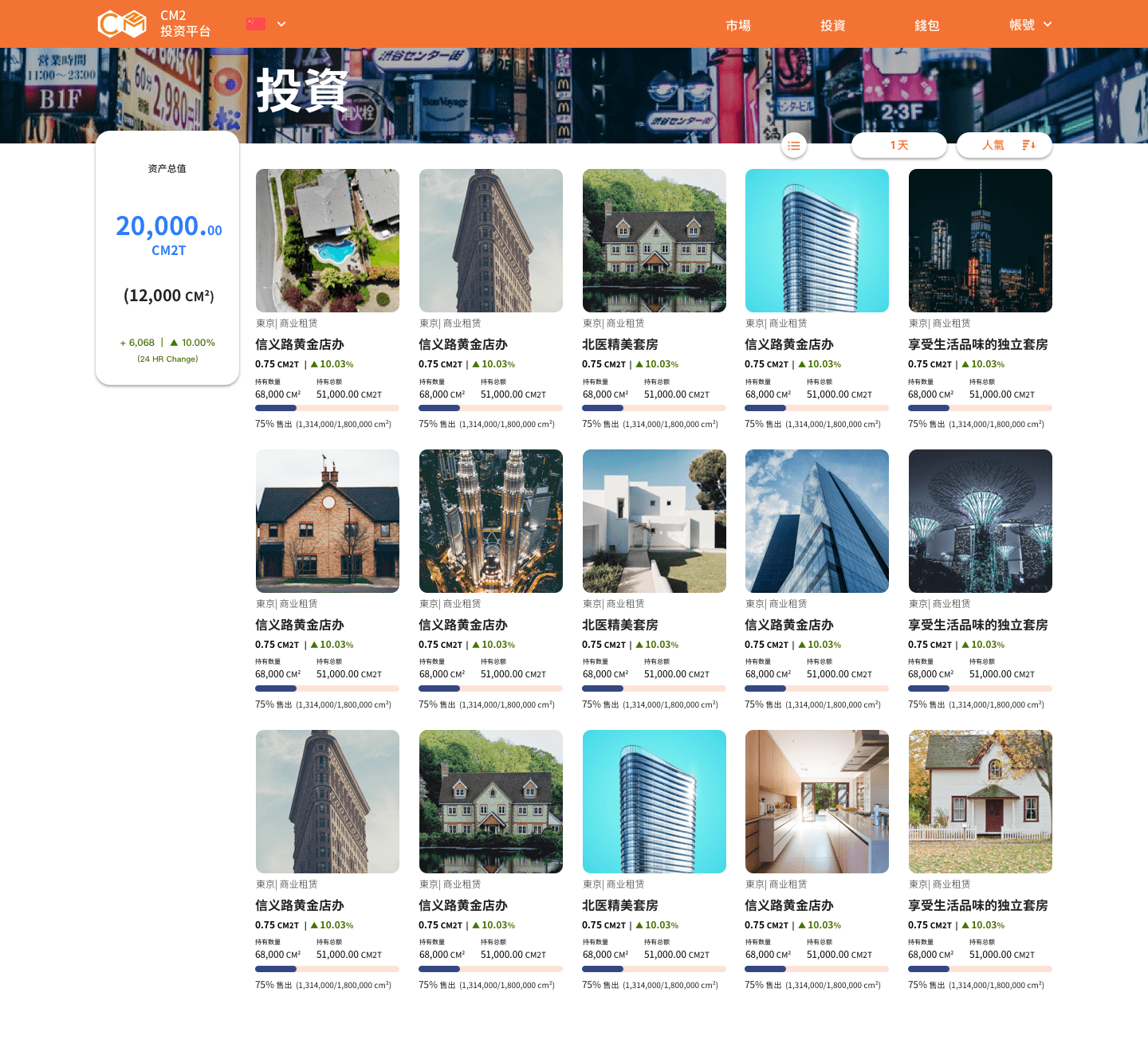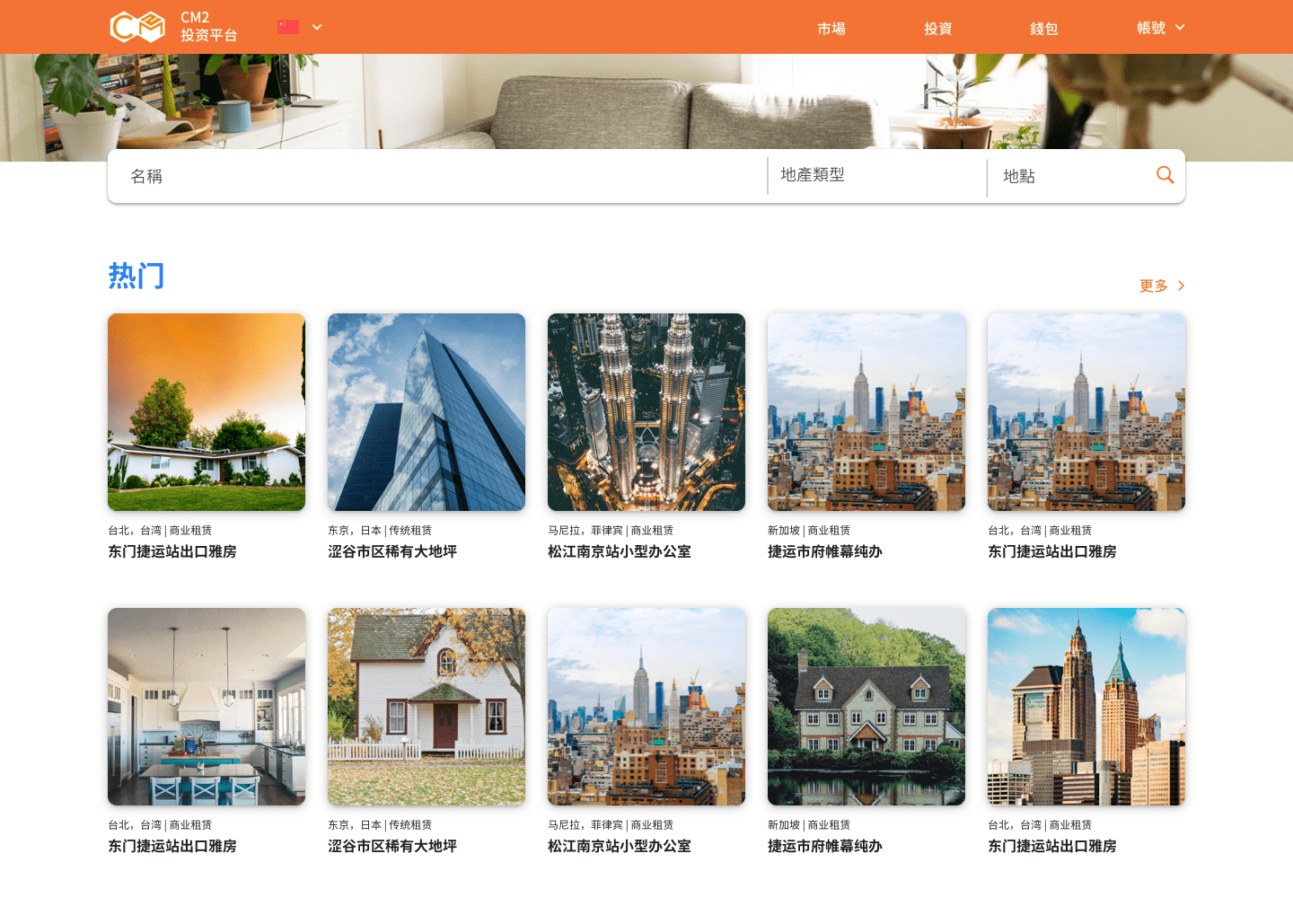CM² Investment Platform
CM Square was a cryptocurrency-based, crowdsourced real estate investment platform that enabled investors to purchase as little as a single cm² of a property.
I designed and developed the CM Square Investment Platform to create a playful yet user-centric experience that makes real estate investing more approachable. I conducted qualitative research to formulate a design strategy, used Sketch to create mockups, and developed the front-end with HTML and CSS.
Intro
Context
To better understand the problem space and context, I spoke with the marketing department and the founders to understand the problems they wanted to solve.
These were the three main issues in the current real estate investment experience:
- High barrier to entry: You needed a considerable amount of capital even to entertain the idea of real estate investing.
- High learning curve: The real estate buying process was complicated, full of technical jargon, and convoluted between brokers, banks, and many other stakeholders.
- Hard to manage: It was challenging to manage the day-to-day operation of real estate investment by oneself, and difficult to find a trustworthy real estate management company.
Strategy
Design Direction
Based on the issues identified and the current stage of the startup, I devised a strategy to guide the design.
- Light and playful UI: The UI should be inviting and playful to create a friendly attitude, signifying the platform’s simple real estate investment process.
- Clear and digestible data: Since one share of the property would cost less than a dollar, we should provide only the essential information to simplify the user’s decision-making.
- Establish trust: Since the startup did not have any brand recognition, we needed to showcase the founders’ experience, well-known investors, and social proof to increase trustworthiness.
Solution
Multi-language Support
This platform would target customers in Taiwan, Hong Kong, and China. We needed to have both English and Chinese versions of the platform. I considered how English text would take up more space than Chinese text and the subtle cultural differences between the two regions.
- Leave enough text space for the English version of the platform
- Option to view in different units of measurement and currency
- Use icons when possible to overcome language barriers
Purchasing Flow
We initially decided that the user would acquire CM2T tokens from cryptocurrency exchanges to purchase property shares. The founders later wanted to allow users to use USD to buy property shares. However, direct purchasing created a layer of complexity in the purchasing loop. Now we had to consider payment integrations and make the process as smooth as possible for users.
I created flowcharts to map out different scenarios and made sure the dialogue content was non-technical and straightforward, so the user didn’t have to overthink while going through the dialogues.
Retrospective
What Now?
The team reached its initial product milestone. The team later expanded to focus solely on the Mongolian real estate market and has now pivoted to an AI real estate investment SaaS product.
What I Would Do Differently?
Consider the experience from end to end
Users still need to use a cryptocurrency exchange to cash out to government-backed currency (e.g., USD, HKD). I should have proposed a design plan that considers the end-to-end experience of purchasing/selling.
Pay closer attention to the onboarding experience
The onboarding process was designed and developed in a week. I should have also created a series of tutorial videos to introduce users to the platform or created an interactive tutorial to help explain it.
Push for more usability testing
I should’ve pushed to have more user testing done to ensure users understand the platform and how to purchase/sell shares.

